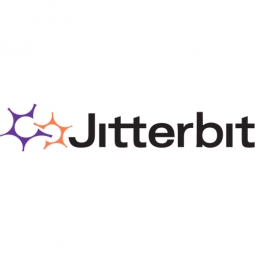Customer Company Size
Mid-size Company
Region
- America
Country
- United States
Product
- Jitterbit
- SAP ByDesign
- Magento
Tech Stack
- SAP ByDesign
- Magento
- Jitterbit
Implementation Scale
- Enterprise-wide Deployment
Impact Metrics
- Productivity Improvements
- Cost Savings
Technology Category
- Application Infrastructure & Middleware - API Integration & Management
Applicable Industries
- Electronics
- Retail
Applicable Functions
- Logistics & Transportation
- Sales & Marketing
Use Cases
- Supply Chain Visibility
- Inventory Management
Services
- System Integration
- Data Science Services
About The Customer
Skullcandy is a leading audio brand that reflects the collision of the music, fashion, and action sports lifestyles. The company's products are sold in the United States and in more than 70 other countries around the world. Skullcandy was founded in 2003 by Rick Alden, the creator of several successful action sports companies and a lifelong industry enthusiast. The company had been using ad hoc methods to share information between its ERP, web stores, and shipping partners. However, this approach was proving to be too time-consuming and prone to errors.
The Challenge
Skullcandy, a leading audio brand, was facing challenges with its data management and business processes. The company had been using ad hoc methods to share information between its ERP, web stores, and shipping partners. This approach was proving to be too time-consuming and prone to errors. The company needed to connect its SAP ByDesign system with storefronts and shipping providers to enable visibility between SAP ByDesign, Magento, webshops, and 3PLs. They also needed to interface with SPS Commerce EDI orders from big box retailers like Best Buy and Target.
The Solution
Skullcandy decided to take ownership of their data management and business processes by deploying a standardized integration platform. They chose Jitterbit because it offered the most powerful and flexible solution during a product evaluation. Using Jitterbit, Skullcandy successfully integrated their key 3PL warehouses owned by UPS and DHL with their SAP by Design ERP application in a matter of weeks. The company next used Jitterbit to create a standard interface for consuming orders from their various web stores, including eBay, Amazon.com, and their own Magento-based stores on skullcandy.com.
Operational Impact
Quantitative Benefit

Case Study missing?
Start adding your own!
Register with your work email and create a new case study profile for your business.
Related Case Studies.

Case Study
Remote Temperature Monitoring of Perishable Goods Saves Money
RMONI was facing temperature monitoring challenges in a cold chain business. A cold chain must be established and maintained to ensure goods have been properly refrigerated during every step of the process, making temperature monitoring a critical business function. Manual registration practice can be very costly, labor intensive and prone to mistakes.

Case Study
Improving Production Line Efficiency with Ethernet Micro RTU Controller
Moxa was asked to provide a connectivity solution for one of the world's leading cosmetics companies. This multinational corporation, with retail presence in 130 countries, 23 global braches, and over 66,000 employees, sought to improve the efficiency of their production process by migrating from manual monitoring to an automatic productivity monitoring system. The production line was being monitored by ABB Real-TPI, a factory information system that offers data collection and analysis to improve plant efficiency. Due to software limitations, the customer needed an OPC server and a corresponding I/O solution to collect data from additional sensor devices for the Real-TPI system. The goal is to enable the factory information system to more thoroughly collect data from every corner of the production line. This will improve its ability to measure Overall Equipment Effectiveness (OEE) and translate into increased production efficiencies. System Requirements • Instant status updates while still consuming minimal bandwidth to relieve strain on limited factory networks • Interoperable with ABB Real-TPI • Small form factor appropriate for deployment where space is scarce • Remote software management and configuration to simplify operations

Case Study
How Sirqul’s IoT Platform is Crafting Carrefour’s New In-Store Experiences
Carrefour Taiwan’s goal is to be completely digital by end of 2018. Out-dated manual methods for analysis and assumptions limited Carrefour’s ability to change the customer experience and were void of real-time decision-making capabilities. Rather than relying solely on sales data, assumptions, and disparate systems, Carrefour Taiwan’s CEO led an initiative to find a connected IoT solution that could give the team the ability to make real-time changes and more informed decisions. Prior to implementing, Carrefour struggled to address their conversion rates and did not have the proper insights into the customer decision-making process nor how to make an immediate impact without losing customer confidence.

Case Study
Digital Retail Security Solutions
Sennco wanted to help its retail customers increase sales and profits by developing an innovative alarm system as opposed to conventional connected alarms that are permanently tethered to display products. These traditional security systems were cumbersome and intrusive to the customer shopping experience. Additionally, they provided no useful data or analytics.





